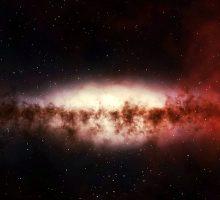- What is dark energy and why is it important?
- The history of dark energy: from discovery to current understanding.
- Theories of dark energy: exploring the possibilities.
- Measuring dark energy: how scientists study something we can’t see.
- Dark energy and the fate of the universe: what does it mean for our future?
- Debates and controversies in dark energy research.
- Dark energy and the nature of gravity: implications for our understanding of the universe.
- Dark energy and the search for new physics: could it be a window into new realms of physics?
- Dark energy and the cosmic microwave background: what can we learn about the early universe?
- The future of dark energy research: what’s next for this fascinating field?
What is dark energy and why is it important?
Dark energy is one of the biggest mysteries in the universe. It is a hypothetical form of energy that is thought to be responsible for the accelerated expansion of the universe. But what exactly is dark energy, and why is it so important?
To understand dark energy, we first need to understand the history of the universe. In the early universe, shortly after the Big Bang, the universe was expanding, but that expansion was slowing down due to the gravitational attraction of all the matter in the universe. However, in the late 1990s, astronomers discovered something surprising: the expansion of the universe is not slowing down, but rather speeding up. This acceleration is believed to be caused by the presence of dark energy.
So what is dark energy? It’s still largely a mystery, but it’s thought to be a type of energy that is present throughout the universe and has negative pressure. This negative pressure is thought to counteract the attractive force of gravity, causing the universe to expand at an accelerating rate.
The importance of dark energy lies in the fact that it has profound implications for the fate of the universe. If the expansion continues to accelerate, as current observations suggest, then eventually galaxies will become so far apart that they will no longer be visible from each other. This means that the universe will become a lonely and dark place.
Furthermore, dark energy could also be the key to unlocking some of the biggest mysteries in physics, such as the nature of gravity and the search for a theory of everything. By studying dark energy, we can gain a deeper understanding of the universe and our place in it.
The history of dark energy: from discovery to current understanding.
The discovery of dark energy in the late 1990s was a groundbreaking moment in the history of cosmology. The story of dark energy starts with the work of Edwin Hubble in the 1920s, who discovered that the universe was expanding. This discovery led to the development of the Big Bang theory, which explains the origin of the universe as a rapid expansion from a singularity.
However, it wasn’t until the 1990s that scientists began to realize that the expansion of the universe was not only continuing, but actually accelerating. This realization came from a series of observations of supernovae conducted by two independent research teams, one led by Saul Perlmutter and the other by Brian Schmidt and Adam Riess.
These observations showed that distant supernovae were fainter than expected, indicating that they were farther away than they should be if the universe was expanding at a constant rate. This led the researchers to conclude that the expansion of the universe was actually accelerating.
The next step was to figure out what was causing this acceleration. One possibility was that the universe was filled with a mysterious form of energy, which came to be known as dark energy. This idea was further supported by other observations, such as measurements of the cosmic microwave background radiation and the large-scale structure of the universe.
Today, the prevailing theory is that dark energy is a type of energy that is present throughout the universe and has negative pressure, which counteracts the attractive force of gravity and causes the universe to expand at an accelerating rate. However, the nature of dark energy remains a mystery, and there are many competing theories and hypotheses.
In recent years, scientists have made significant progress in studying dark energy, using a variety of techniques such as galaxy surveys and gravitational lensing. These observations have allowed researchers to better understand the properties of dark energy and its effect on the universe.
Despite these advances, there is still much that we don’t know about dark energy, and it remains one of the biggest mysteries in the universe. But the history of dark energy shows that science is a constantly evolving field, and that even the most enigmatic phenomena can be understood with time, dedication, and perseverance.
Theories of dark energy: exploring the possibilities
Dark energy is one of the most puzzling phenomena in modern physics. Its nature and properties remain elusive, and scientists are actively exploring different theories to explain its existence. Here are some of the most prominent theories of dark energy:
- Cosmological Constant: The cosmological constant is the simplest and most well-known theory of dark energy. It suggests that dark energy is a constant energy density that fills the vacuum of space. This energy density exerts a negative pressure that causes the universe to expand at an accelerating rate.
- Modified Gravity: Another theory of dark energy is that it arises from modifications to the laws of gravity. This idea proposes that the acceleration of the universe is not due to an unknown form of energy, but rather a modification of the laws of gravity at very large scales.
- Phantom Energy: Phantom energy is a hypothetical form of energy that has an equation of state less than -1, which means that its negative pressure is stronger than that of the cosmological constant. This theory suggests that the universe will expand at an ever-increasing rate, eventually leading to a “Big Rip” in which all matter in the universe is torn apart.
- Dark Fluid: The dark fluid theory proposes that dark energy is a type of fluid that permeates the universe. This fluid has negative pressure, which causes the universe to expand at an accelerating rate. Unlike the cosmological constant, the density of the dark fluid can vary with time and space.
- Holographic Dark Energy: Holographic dark energy is based on the idea that the universe is a hologram. This theory proposes that dark energy arises from the interaction between the universe’s surface area and the energy density of the vacuum.
While each of these theories offers a different explanation for the existence of dark energy, none have been definitively proven or disproven. Nonetheless, scientists continue to study dark energy in hopes of gaining a better understanding of the universe and its fundamental laws.
Measuring dark energy: how scientists study something we can’t see.
Dark energy is a mysterious force that makes up roughly 70% of the universe’s total energy content. Unlike ordinary matter and radiation, dark energy does not interact with light or any other form of electromagnetic radiation. This makes it very difficult to observe directly. However, scientists have developed several techniques for studying dark energy indirectly. Here are some of the ways in which scientists measure dark energy:
- Supernova Surveys: One of the most important techniques for studying dark energy is through observations of Type Ia supernovae. These are explosions of white dwarf stars that occur in binary star systems. Since these supernovae have a known brightness, they can be used as “standard candles” to measure distances in the universe. By measuring the brightness of distant supernovae and comparing them to nearby supernovae, scientists can determine the rate at which the universe is expanding and infer the presence of dark energy.
- Galaxy Surveys: Another way to study dark energy is through large-scale surveys of galaxies. These surveys measure the distribution of galaxies in the universe and how they cluster together. By analyzing these data, scientists can infer the expansion rate of the universe and the properties of dark energy.
- Cosmic Microwave Background Radiation: The cosmic microwave background radiation (CMB) is the leftover radiation from the Big Bang. This radiation permeates the entire universe and contains valuable information about the early universe. By analyzing the CMB, scientists can infer the geometry of the universe and the amount of dark energy present.
- Gravitational Lensing: Dark energy affects the way that gravity works on large scales. Gravitational lensing is a phenomenon in which the path of light is bent by the gravitational pull of a massive object, such as a galaxy or a cluster of galaxies. By measuring the way that light is bent by these objects, scientists can infer the distribution of matter in the universe and the properties of dark energy.
- Baryon Acoustic Oscillations: Baryon acoustic oscillations (BAOs) are sound waves that traveled through the early universe when it was still hot and dense. These waves left a signature on the distribution of matter in the universe. By measuring the position of these acoustic waves in the distribution of galaxies, scientists can infer the expansion rate of the universe and the properties of dark energy.
Dark energy and the fate of the universe: what does it mean for our future?
The discovery of dark energy has transformed our understanding of the universe and its fate. While dark energy remains a mystery, scientists have determined that it plays a crucial role in determining the ultimate fate of the universe. Here’s what we know so far:
- Expansion of the Universe: Dark energy is causing the universe to expand at an accelerating rate. This means that over time, galaxies and other objects in the universe are becoming more and more distant from each other.
- Future of the Universe: Based on current observations and theoretical models, scientists predict that the expansion of the universe will continue to accelerate in the future. This means that galaxies will continue to move away from each other at an increasing rate.
- The Big Rip: If dark energy continues to drive the expansion of the universe, it could eventually lead to a catastrophic event known as the “Big Rip.” In this scenario, the expansion of the universe becomes so fast that it tears apart all matter, including atoms and subatomic particles, leaving behind a featureless and empty void.
- Other Scenarios: While the Big Rip is one possible scenario, it’s not the only one. Other scenarios include the “Big Freeze,” in which the universe expands indefinitely but everything gradually cools down, or the “Big Crunch,” in which the universe eventually stops expanding and begins to contract, eventually collapsing in on itself in a “Big Bang” like event.
- Uncertainty: Despite the advances in our understanding of dark energy, there is still much uncertainty about the ultimate fate of the universe. Our knowledge of dark energy is still limited, and new observations and discoveries could upend our current theories and predictions.
Debates and controversies in dark energy research
The discovery of dark energy has sparked many debates and controversies in the scientific community. Here are some of the key issues that are still being hotly debated:
- Nature of Dark Energy: One of the biggest debates is about the nature of dark energy. Some scientists argue that dark energy is a form of energy that permeates the entire universe, while others propose that it is a modification of gravity. There are also theories that suggest dark energy might be a result of the curvature of spacetime or a manifestation of extra dimensions.
- Measurement Techniques: While there are several methods for measuring dark energy, there is ongoing debate about which technique is the most accurate. For example, some scientists argue that galaxy surveys provide more reliable measurements of dark energy, while others maintain that supernova surveys are more precise.
- Statistical Significance: Another contentious issue is the statistical significance of dark energy measurements. Some scientists argue that the uncertainties in the measurements are too large to make definitive conclusions about dark energy. Others argue that the evidence for dark energy is strong and that it’s the most likely explanation for the observations.
- Alternative Explanations: Some scientists have proposed alternative explanations for the accelerating expansion of the universe that do not involve dark energy. For example, some suggest that the laws of gravity may need to be revised on cosmic scales. Others propose that the universe may be inhomogeneous on large scales, which could create the illusion of acceleration.
- Data Interpretation: Finally, there are debates about how to interpret the data on dark energy. Some scientists argue that the data suggest a cosmological constant, while others propose that the data are better explained by alternative theories.
Dark energy and the nature of gravity: implications for our understanding of the universe
The discovery of dark energy has revolutionized our understanding of the universe and has raised important questions about the nature of gravity. Here are some of the key implications of dark energy for our understanding of gravity:
- Accelerating Expansion: One of the most significant implications of dark energy is that it causes the expansion of the universe to accelerate. This acceleration suggests that the force of gravity on cosmological scales is weaker than previously thought, and that there may be other forces at play that we do not yet understand.
- Dark Matter: Dark energy and dark matter are two of the biggest mysteries in modern physics. While dark energy appears to be causing the universe to accelerate, dark matter is thought to be responsible for the gravitational pull that holds galaxies together. The relationship between dark energy and dark matter is still poorly understood, but it is clear that both are essential for explaining the large-scale structure of the universe.
- Modified Gravity Theories: The discovery of dark energy has also sparked interest in alternative theories of gravity. Some scientists have proposed modified gravity theories, which suggest that the laws of gravity may need to be revised on cosmological scales. These theories attempt to explain the accelerating expansion of the universe without the need for dark energy.
- Unified Theories: Another implication of dark energy for our understanding of gravity is that it highlights the need for a unified theory of physics. A unified theory would integrate the laws of gravity with the other fundamental forces of nature, providing a more complete picture of the universe.
- Future Research: The discovery of dark energy has opened up new avenues for research in cosmology and fundamental physics. Scientists are working to develop new models of dark energy and dark matter, as well as new methods for studying the properties of gravity on cosmological scales. As new data and observations become available, our understanding of the universe and the nature of gravity will continue to evolve.
Dark energy and the search for new physics: could it be a window into new realms of physics?
The discovery of dark energy has led many physicists to speculate that it may be a window into new realms of physics. Here are some of the key ways in which dark energy could be a catalyst for new discoveries:
- New Particles: One possibility is that dark energy is caused by a new particle or field that has yet to be discovered. This particle could interact weakly with matter, making it difficult to detect, but it could still play a crucial role in shaping the large-scale structure of the universe.
- New Forces: Another possibility is that dark energy is caused by a new force of nature that has yet to be discovered. This force could be weaker than gravity on small scales but could become dominant on cosmological scales, leading to the accelerating expansion of the universe.
- Quantum Gravity: The discovery of dark energy has also sparked interest in the field of quantum gravity. Quantum gravity is a theoretical framework that attempts to reconcile the laws of quantum mechanics with the laws of gravity. Some physicists have suggested that dark energy could provide clues to the nature of quantum gravity.
- Extra Dimensions: Some theories of physics suggest that there may be extra dimensions beyond the four that we are familiar with (three spatial dimensions and one time dimension). These extra dimensions could provide a mechanism for explaining the properties of dark energy.
- Unification Theories: Finally, the discovery of dark energy has highlighted the need for unification theories in physics. Unification theories attempt to integrate the laws of gravity with the other fundamental forces of nature, providing a more complete picture of the universe. Dark energy could play a crucial role in these theories, providing insights into the nature of the universe at the largest scales.
Dark energy and the cosmic microwave background: what can we learn about the early universe
The cosmic microwave background (CMB) is the afterglow of the Big Bang, a faint glow of radiation that permeates the entire universe. It provides a snapshot of the universe when it was just 380,000 years old. By studying the CMB, scientists can learn a great deal about the early universe, including the role that dark energy played in its evolution. Here are some of the key insights that have been gained from studying the CMB:
- Early Universe: The CMB provides a unique window into the early universe. By studying the patterns in the CMB, scientists can learn about the conditions that existed just after the Big Bang, including the density of matter and the temperature of the universe.
- Dark Energy: One of the most significant discoveries that has been made through studying the CMB is the confirmation of dark energy’s existence. By studying the CMB, scientists have been able to measure the curvature of space-time and determine that the universe is flat. This suggests that dark energy is causing the universe to expand at an accelerating rate.
- Inflation: Another important discovery that has been made through studying the CMB is the theory of cosmic inflation. This theory suggests that the universe underwent a period of rapid expansion just after the Big Bang, which smoothed out the universe and created the seeds for the formation of galaxies and stars.
- Large Scale Structure: The CMB also provides insights into the large-scale structure of the universe. By studying the patterns in the CMB, scientists can learn about the distribution of matter and the formation of galaxies and clusters of galaxies.
- Future of the Universe: Finally, the CMB provides insights into the future of the universe. By studying the patterns in the CMB, scientists can make predictions about the fate of the universe, including the role that dark energy will play in shaping its evolution.
The future of dark energy research: what’s next for this fascinating field
The study of dark energy is an active and exciting area of research, with new discoveries and breakthroughs occurring all the time. Here are some of the key areas that researchers are currently focusing on, and what we can expect in the future of dark energy research.
- More Accurate Measurements: One of the most important goals of dark energy research is to refine our measurements of its properties, such as its density and rate of expansion. This will require the development of new, more precise instruments and observational techniques. For example, the Large Synoptic Survey Telescope (LSST), currently under construction in Chile, will survey the entire sky every few nights, enabling researchers to observe thousands of supernovae and other phenomena that could help us understand dark energy.
- New Observations: In addition to refining existing techniques, researchers are also working to develop new observational tools and methods to study dark energy. For example, the Euclid satellite, set to launch in the mid-2020s, will observe the shapes and positions of billions of galaxies, allowing researchers to study the effects of dark energy on the large-scale structure of the universe.
- Alternative Theories: While the standard model of dark energy, the cosmological constant, has been supported by numerous observations, there are still many open questions and alternative theories being explored. Researchers are investigating the possibility of modifying gravity on cosmological scales, or even revisiting the idea of a dynamical field as the source of dark energy.
- Interdisciplinary Approaches: The study of dark energy requires a multidisciplinary approach, bringing together physicists, astronomers, and mathematicians. In the future, we can expect to see even more collaboration between different scientific fields, as researchers work to develop a more comprehensive understanding of the universe and the role of dark energy within it.
- Technological Advancements: Finally, the future of dark energy research will be shaped by technological advancements, including advances in computing power, data analysis, and artificial intelligence. These tools will enable researchers to analyze vast amounts of data and make new discoveries that were previously impossible.
Conclusion
In conclusion, dark energy is a mysterious and fascinating topic that has captivated the attention of scientists and the public alike. From the discovery of its existence to the ongoing debates and controversies surrounding its nature and properties, dark energy research has come a long way in a relatively short period of time. Today, researchers are making tremendous strides in understanding this elusive force, with new discoveries and breakthroughs occurring all the time.
Looking to the future, the study of dark energy promises to remain a vibrant and exciting field, with many important questions and challenges still to be explored. From refining our measurements of its properties to developing new observational tools and alternative theories, researchers will continue to push the boundaries of our understanding of the universe and the role of dark energy within it.
Ultimately, the study of dark energy is about more than just understanding the universe. It is about our fundamental curiosity and desire to explore the unknown, to uncover the secrets of the cosmos, and to expand our knowledge of the world around us. As we continue to delve deeper into this fascinating field, we can only imagine the incredible discoveries and insights that await us in the future.














